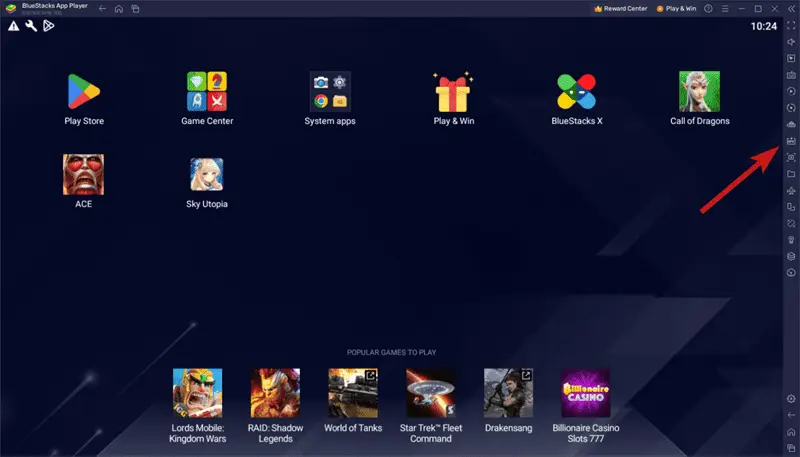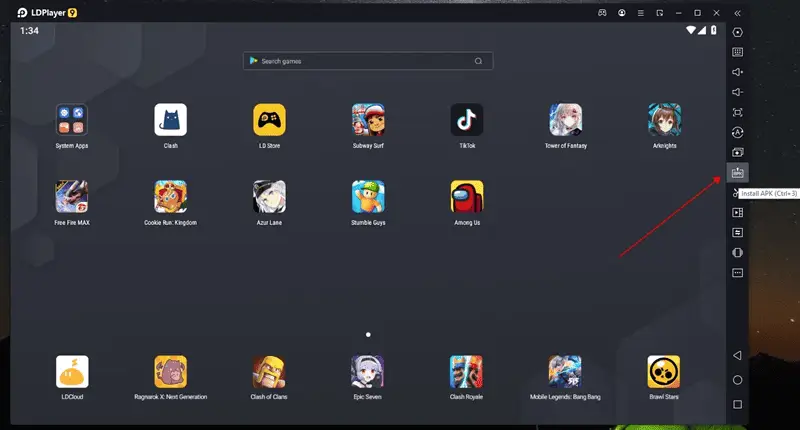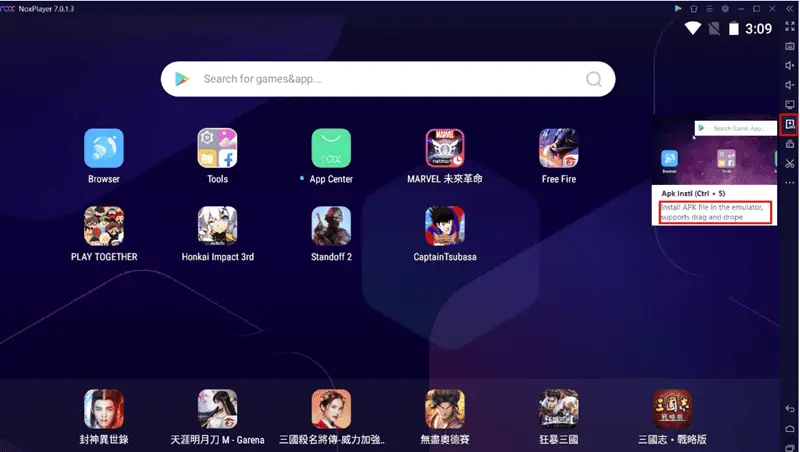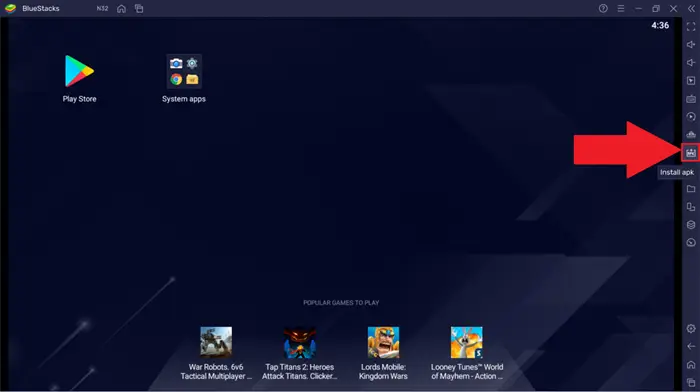In this tutorial, I will tell you how to download Moodle for PC. Moodle empowers educators and learners worldwide to create dynamic and engaging online learning environments and is available on the Google Play Store and the iOS App Store. However, I will tell you how to download Moodle for PC in this article.
Moodle is a clear LMS favourite with a strong global user base as a free, open-source learning management system. This variety, combined with its flexibility and suite of tools, makes it great for many different types of educational institutions — from a small K-12 classroom to a large university and everything in between, including corporate training. The root of Moodle architecture is modular architecture, and with the power of community development.
This platform has a wealth of activity modules — forums, quizzes, assignments, and wikis — all designed to help you facilitate interactive and engaging learning. Course content management, tracking student progress, assessment management for teachers, and easy navigation and collaborative tools for students become part of a seamless learning experience. Final Thoughts About Moodle Accessibility Moodle has a commitment to accessibility in order to cater to a wider audience and maintain an inclusive educational environment.
Moodle has always been a top choice for online learning and continues to be updated and improved, where users are contributing regularly. Being open-source implies there are no costs associated with licensing, and so provides an economical solution for institutions across the globe. Moodle has robust integration support and emphasizes pedagogical principles, enabling institutions to build purposeful and engaging digital learning environments.
Features of the Moodle:
- Robust Course Management System: Facilitates the creation, organization, and delivery of online courses with flexible settings.
- Extensive Activity Modules: Offers a wide range of interactive tools like forums, quizzes, assignments, wikis, and chats to enhance learning.
- Highly Customizable Interface: Allows administrators and teachers to tailor the look and feel, layouts, and functionalities to suit specific institutional needs.
- Powerful Grading Tools: Provides comprehensive options for assessment, including rubrics, advanced grading methods, and gradebook management.
- Flexible User Authentication: Supports various authentication methods, including manual accounts, LDAP, SAML, and external database integration.
- Open Source Community Support: Benefits from a large, active global community contributing to development, bug fixes, and feature enhancements.
- Scalable Architecture: Designed to accommodate a few users to millions, making it suitable for institutions of all sizes.
- Integrated Reporting and Analytics: Offers detailed insights into student activity, progress, and course engagement through various reports.
- Mobile Learning Ready: Provides a responsive design and dedicated mobile apps for learning on the go across various devices.
- Multilingual Language Packs: Supports over 100 languages, enabling a truly global and inclusive learning environment.
Due to the popularity of Android and iOS devices, many apps are made only for these platforms and very few for Windows and PCs. Even if Moodle may not be available for PC or Windows but only on the Google Play Store or iOS App Store, there are still some tricks and tips that can help you download Moodle for PC. You can take the help of Android emulators to install and download Moodle for PC. This article will help you navigate how to download Moodle for PC.
Download & Install Moodle on PC:
If you want to run Android apps on your PC without any software, then you can read this tutorial: How to Install Android Apps on PC without any Software? Alternatively, you can run Android apps like Moodle via Android Emulators like BlueStacks, LDPlayer and NoxPlayer.
Or, you can download APK files on your PC, you need to find a reliable source for the APK and then download it safely. Just follow the various methods and steps listed in this article to Download Moodle for PC and Moodle will run on your PC without any problem.
Please note that we are strongly against downloading or installing applications from third-party sources. Such apps may pose security risks, compromise your personal data, or violate app store policies. For your safety and to ensure optimal performance, please use official app stores such as the Google Play Store or the Apple App Store for all downloads.
Method – 1: Download and Install Moodle using Bluestacks
As I told you before, the Moodle app is not available for PC but you can still download Moodle for PC using a Bluestacks emulator. BlueStacks is an Android emulator that lets you run Android apps on a computer. Just follow the steps below to properly download and install Moodle on your PC:
Step 1: Download and Install BlueStacks:
First, you have to download BlueStacks on your PC. You can visit the official website of Bluestacks and download it from there or download it from the link below.
Run the installer and follow the on-screen instructions to complete the installation.
Step 2: Set Up BlueStacks:
Launch BlueStacks after installation.
Once the Bluestacks emulator is launched, open the Google Play Store within BlueStacks. Sign in with your Google account to access the Google Play Store. You can use a Gmail account to do so but if you don’t have a Gmail account, then you need to create one.
Step 3: Install Moodle App:
- Via Google Play Store:
- Open the Google Play Store app within BlueStacks.
- Search for the Moodle app.
- Click “Install” to download and install the Moodle app.
- Look for Moodle icon created on the Bluestacks emulator homepage.
- Via APK Files:
- You need to find a reliable source for the Moodle APK and then download it safely:
- Drag and drop the downloaded Moodle APK file directly onto the BlueStacks window.
- Alternatively, use the “Install APK” feature:
- Click on the “Install APK” button (usually a toolbar icon) or press Ctrl + Shift + B.
- Locate the downloaded Moodle APK file on your PC and select it.
- BlueStacks will install the app automatically.
- Your Moodle should appear on the BlueStacks home screen.
- You need to find a reliable source for the Moodle APK and then download it safely:

Method – 2: Download and Install Moodle using LDPlayer
If you don’t want to install the Bluestacks Android emulator but still want to enjoy and download Moodle for PC, then here is another emulator you can download. LDPlayer is another Android emulator that you can use. Just follow the steps below to install the Moodle:
Step 1: Download and Install LDPlayer:
First, you have to download LDPlayer on your PC. You can visit the official website of LDPlayer and download it from there or download it from the link below.
Run the installer and follow the on-screen instructions to complete the installation.
Step 2: Set Up LDPlayer:
Launch LDPlayer after installation.
Once the LDPlayer emulator is launched, open the Google Play Store within LDPlayer. Sign in with your Google account to access the Google Play Store. You can use a Gmail account to do so but if you don’t have a Gmail account, then you need to create one.
Step 3: Install Moodle App:
- Via Google Play Store:
- Open the Google Play Store app within LDPlayer.
- Search for the Moodle app.
- Click “Install” to download and install the Moodle app.
- Look for Moodle icon created on the LDPlayer emulator homepage.
- Via APK Files:
- You need to find a reliable source for the Moodle APK and then download it safely:
- Drag and drop the downloaded Moodle APK file directly onto the LDPlayer window.
- Alternatively, use the “Install APK” feature:
- Click on the “Install APK” button (usually a toolbar icon) or press Ctrl + 3.
- Locate the downloaded Moodle APK file on your PC and select it.
- LDPlayer will install the app automatically.
- Your Moodle should appear on the LDPlayer home screen.
- You need to find a reliable source for the Moodle APK and then download it safely:

Method – 3: Download and Install Moodle using NoxPlayer
There is another emulator that you can use to run Moodle on Windows. NoxPlayer will help you to do so.
Step 1: Download and Install NoxPlayer:
First, you have to download NoxPlayer on your PC. You can visit the official website of NoxPlayer and download it from there or download it from the link below.
Run the installer and follow the on-screen instructions to complete the installation.
Step 2: Set Up NoxPlayer:
Launch NoxPlayer after installation.
Once the NoxPlayer emulator is launched, open the Google Play Store within NoxPlayer. Sign in with your Google account to access the Google Play Store. You can use a Gmail account to do so but if you don’t have a Gmail account, then you need to create one.
Step 3: Install Moodle App:
- Via Google Play Store:
- Open the Google Play Store app within NoxPlayer.
- Search for the Moodle app.
- Click “Install” to download and install the Moodle app.
- Look for Moodle icon created on the NoxPlayer emulator homepage.
- Via APK Files:
- You need to find a reliable source for the Moodle APK and then download it safely:
- Drag and drop the downloaded Moodle APK file directly onto the NoxPlayer window.
- Alternatively, use the “Install APK” feature:
- Click on the “Install APK” button (usually a toolbar icon) or press Ctrl + 5.
- Locate the downloaded Moodle APK file on your PC and select it.
- NoxPlayer will install the app automatically.
- Your Moodle should appear on the NoxPlayer home screen.
- You need to find a reliable source for the Moodle APK and then download it safely:

Moodle App not available on Google Play Store?
You must have noticed that in all the above-mentioned methods, we are downloading Moodle from the Play Store. However, sometimes it can happen that due to geolocation restrictions, Moodle might not be available in your region. So, what to do in that kind of situation? Well, here is another trick for you to run and install Moodle on PC without geo-restriction or Google Play Store.
Pre-requisite
Before moving forward, you need to download the Moodle APK file from a reliable, credible and trustworthy third-party website to run it on your PC if it is unavailable on the Google Play Store.
We strongly recommend against downloading or installing applications from third-party sources. Such apps may pose security risks, compromise your personal data, or violate app store policies. For your safety and to ensure optimal performance, please use official app stores such as the Google Play Store or the Apple App Store for all downloads.
Procedure
Follow the steps to run the downloaded Moodle APK file on PC, We are using BlueStacks for this tutorial:
Step 1: Download and install Bluestacks or Nox Player or LDPlayer, steps and links are mentioned in Method 1, Method 2 and Method 3.
Step 2: Launch Bluestacks on your computer. Now, head over to the “Install APK” button which is on the right sidebar as shown in the image below.

Step 3: A Windows Explorer pop-up will come up. Navigate to the downloaded Moodle APK file location. Now select the Moodle APK and click on open. The app installation will begin and once the installation is complete, the app will appear on the BlueStacks home screen.
OR
Step 3: You can simply navigate to the Moodle APK file location and drag the downloaded Moodle APK to BlueStacks. The installation will begin, and once completed, the app will appear on the BlueStacks home screen.
Alternatives to the Moodle:
- Canvas LMS: A user-friendly and feature-rich learning management system known for its intuitive design and robust integrations.
- Blackboard Learn: A comprehensive and widely adopted educational technology platform offering a suite of tools for teaching and learning.
- Google Classroom: A simplified, web-based platform designed to streamline assignments, boost collaboration, and foster seamless communication for educators.
- Schoology: A K-12 focused learning management system that emphasizes community, collaboration, and personalized learning experiences.
- D2L Brightspace: An innovative and adaptable learning platform committed to creating engaging and personalized learning journeys for all students.
- TalentLMS: A cloud-based LMS that’s incredibly easy to set up and use, perfect for corporate training and small to medium-sized businesses.
- Open edX: An open-source platform offering powerful tools for creating and hosting large-scale online courses, often used for MOOCs.
- Thinkific: A popular platform tailored for entrepreneurs and creators looking to build, market, and sell their own online courses.
